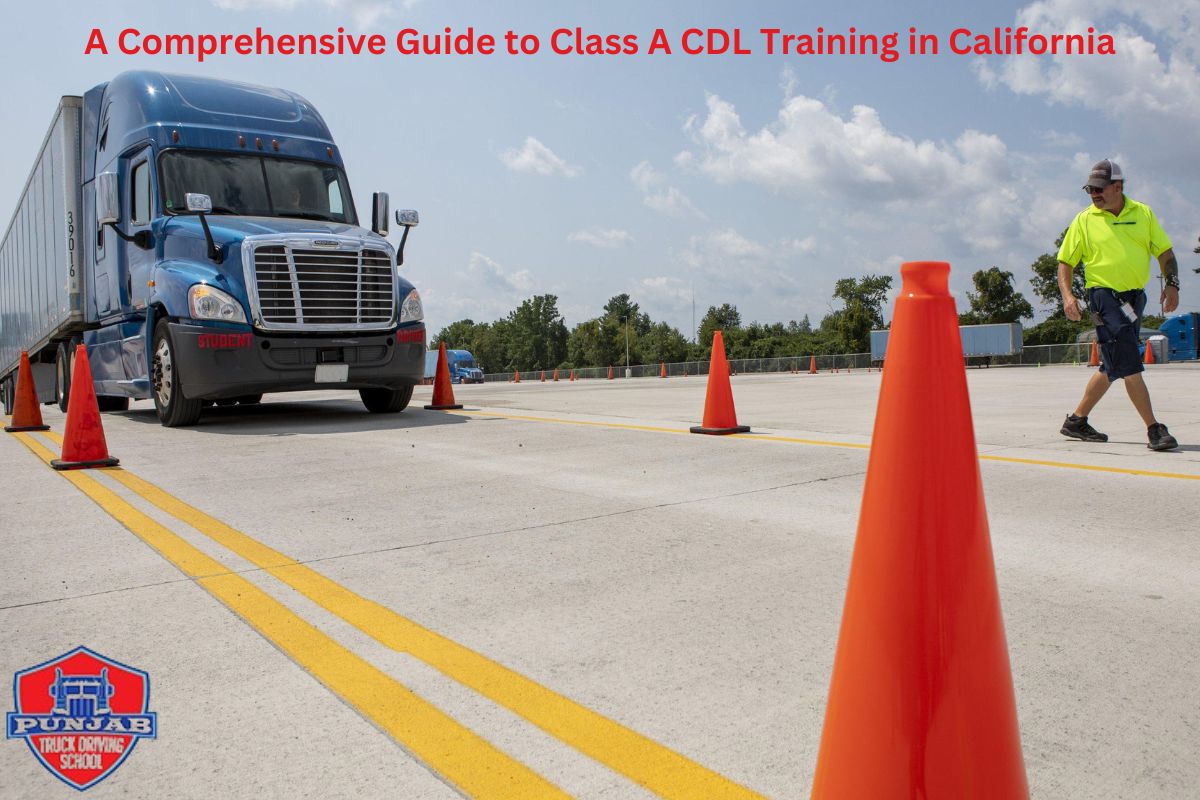California, the land of sunshine and opportunity, beckons with open roads for those seeking a fulfilling career change. If you’re looking for a stable job with good pay and the chance to explore the country, then Class A CDL training might be the perfect springboard. This guide delves into everything you need to know about acquiring a Class A Commercial Driver’s License (CDL) in California, equipping you to navigate the path toward a rewarding career as a professional truck driver.
What is a Class A CDL?
A Class A CDL is the highest class of commercial driver’s license in California. It permits you to operate any combination vehicle, including tractor-trailers, double/triple trailers, and vehicles with a Gross Combination Weight Rating (GCWR) exceeding 26,000 pounds. This opens doors to a wide range of trucking opportunities hauling diverse cargo across state lines and beyond.
Benefits of Obtaining a Class A CDL in California
- High Earning Potential: Truck drivers are in high demand, particularly those with a Class A CDL. The Bureau of Labor Statistics projects a 4% growth in truck driving jobs from 2021 to 2031, translating to ample opportunities. Additionally, experienced Class A drivers can command competitive salaries with benefits packages.
- Job Security: The trucking industry is the backbone of the American economy, transporting vital goods across the nation. This translates to job security, with a constant demand for qualified drivers to keep the supply chain running smoothly.
- Travel and Adventure: If you enjoy seeing new places, then truck driving can be a fulfilling career choice. You’ll traverse scenic landscapes, experience diverse cultures in different cities, and gain a broader perspective on the country.
- Freedom and Independence: Truck driving offers a significant degree of autonomy. You’ll set your schedule (within company guidelines), plan your routes, and enjoy the sense of accomplishment that comes with delivering important goods on time.
Requirements for Obtaining a Class A CDL in California
To be eligible for a Class A CDL in California, you must meet the following requirements:
- Be at least 21 years old (18 years old for intrastate commerce only with a special waiver).
- Possess a valid California driver’s license.
- Pass a written knowledge test covering topics such as vehicle operation, traffic laws, and safe driving practices.
- Pass a vision test meeting specific Department of Motor Vehicles (DMV) standards.
- Undergo a medical examination by a certified medical examiner to ensure physical fitness for driving a commercial vehicle.
The Class A CDL Training Process in California
Obtaining your Class A CDL involves a two-pronged approach: classroom instruction and behind-the-wheel training. Here’s a breakdown of what to expect:
- Classroom Instruction: CDL training schools offer comprehensive classroom courses designed to equip you with the theoretical knowledge required to pass the written knowledge test and operate a Class A vehicle safely. Topics covered typically include:
- Federal Motor Carrier Safety Administration (FMCSA) regulations
- Safe driving practices for large trucks
- Vehicle inspection procedures
- Cargo securement techniques
- Trip planning and navigation
- Accident avoidance and defensive driving
- Behind-the-Wheel Training: This hands-on component allows you to practice maneuvering a Class A vehicle under the guidance of a certified instructor. You’ll learn essential skills like:
- Pre-trip inspections
- Basic maneuvering (starting, stopping, turning)
- Shifting gears (if applicable)
- Backing up and docking
- Highway driving
- Handling emergencies
Types of Class A CDL Training Programs in California
CDL training schools in California offer various program options to cater to individual needs and schedules. Here are some common program structures:
- Full-time Programs: These intensive programs typically last 4-6 weeks, offering a fast track to obtaining your CDL. They involve daily classroom instruction and behind-the-wheel training, ideal for those seeking to quickly enter the workforce.
- Part-time Programs: These programs cater to individuals with busy schedules. They offer flexible evening or weekend classes, allowing you to balance your CDL training with other commitments.
Combination Programs: These programs combine elements of full-time and part-time structures, offering a more customized approach. You can adjust the training pace based on your availability.

